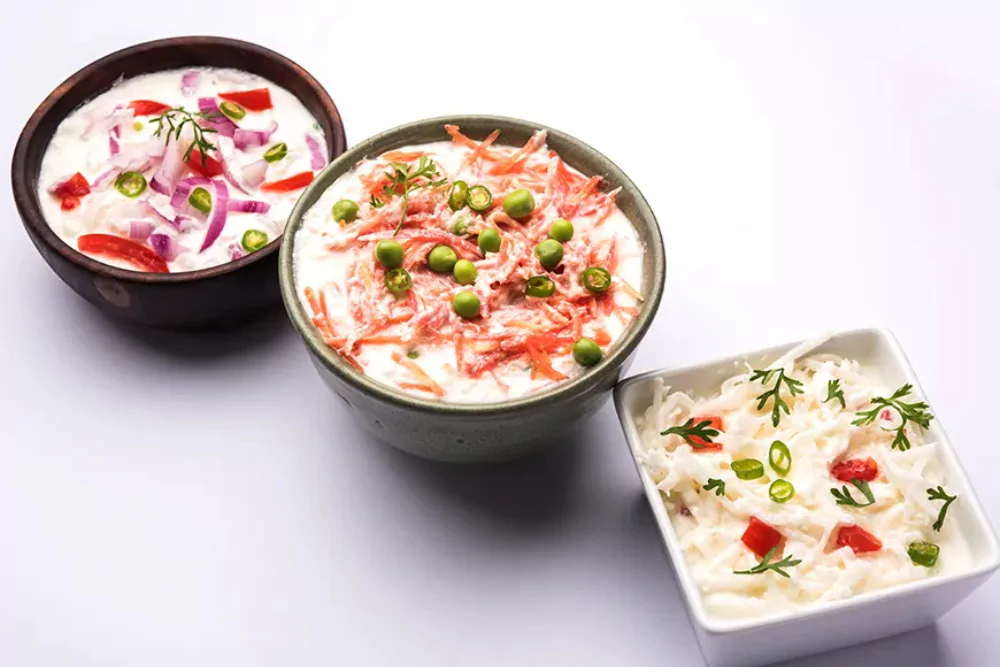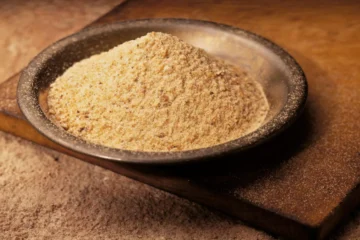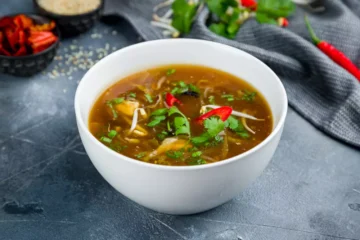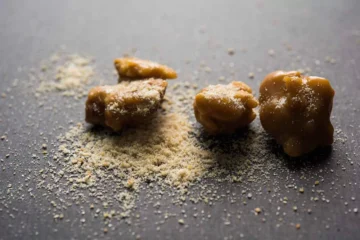1. What is Hing, and How Does it Enhance the Flavor of Raita and Yogurt-Based Dishes?
Short Summary: Hing, also known as asafoetida, is a spice with a pungent aroma that enriches raita and yogurt-based dishes by adding an umami-rich, savory depth to their flavor.
Detailed Answer:
- Hing, or asafoetida, is derived from the resin of Ferula plants and has been a staple in Indian cuisine for centuries.
- Its distinctive pungent aroma transforms yogurt-based dishes like raita into aromatic delights.
- By reducing the bitterness in yogurt, hing creates a harmonious flavor profile in raita.
- Tempering hing in oil or ghee amplifies its savory notes, infusing a rich and balanced taste into dishes.
- Its unique taste bridges the gap between tangy yogurt and other spices, enhancing the overall flavor experience.
Adding hing to raita not only amplifies the taste but also introduces a traditional essence to your meals, making them more authentic and enjoyable.
2. Are There Any Health Benefits of Adding Hing to Yogurt-Based Dishes?
Short Summary: Hing offers digestive relief, reduces bloating, has antimicrobial properties, and may enhance gut health, making it a beneficial addition to yogurt-based dishes.
Detailed Answer:
- Hing stimulates digestive enzymes, aiding in the digestion of yogurt-based dishes like raita.
- It relieves bloating, gas, and indigestion, making meals lighter and more comfortable to digest.
- Hing’s antimicrobial properties help combat harmful bacteria, ensuring healthier consumption.
- Anti-inflammatory properties in hing may support gut health and overall well-being.
- Additionally, hing is rich in antioxidants that neutralize free radicals, promoting better health.
Including hing in raita not only enhances flavor but also introduces a host of health benefits, making it a wise choice for your meals.
3. Can I Pair Hing-Flavored Raita with Specific Meals or Cuisines for the Best Taste?
Short Summary: Hing-flavored raita pairs excellently with spicy meals, Indian cuisines, kebabs, biryanis, and global dishes, offering a cooling balance to intense flavors.
Detailed Answer:
- Its cooling properties perfectly balance the spiciness of dishes like biryani, pulao, and curries.
- Serves as a refreshing dip for kebabs, tikkas, and roasted vegetables, enriching their flavor.
- Pairs well with Indian flatbreads like parathas, adding layers of taste to stuffed varieties.
- For a fusion twist, complement spicy wraps, tacos, or even Mediterranean meals with hing-flavored raita.
- Works wonders with simple rice dishes and lentil preparations, adding a flavorful contrast.
Whether traditional or contemporary, hing-flavored raita enhances any meal, creating a versatile dining experience.
4. What Are Some Easy Recipes to Prepare Hing-Flavored Raita at Home?
Short Summary: Hing-flavored raita recipes involve tempering hing in oil and blending it with yogurt, spices, and fresh ingredients for delightful variations.
Detailed Answer:
- Classic Hing Raita: Temper hing in hot oil and mix it with yogurt, roasted cumin, salt, and fresh coriander leaves for a timeless recipe.
- Mint-Hing Raita: Blend yogurt with mint leaves, add hing, black salt, and green chili paste for a refreshing twist.
- Cucumber-Hing Raita: Grate fresh cucumber, mix with yogurt, and add hing, rock salt, and a sprinkle of dill or cilantro for a cooling delight.
- Boondi-Hing Raita: Soak crispy boondi in water, mix into yogurt, and season with hing, chaat masala, and chili powder.
- Spinach-Hing Raita: Steam spinach, chop finely, and blend into yogurt with hing and garlic for an earthy flavor.
These easy-to-follow recipes ensure that hing-flavored raita can be a part of your daily meals or festive spreads.
5. Are There Any Substitutes for Hing If I Don’t Have It Available, and How Will They Impact the Flavor?
Short Summary: Garlic, onion powder, and leeks can substitute hing, offering savory flavors but lacking the unique aroma of hing.
Detailed Answer:
- Garlic Powder: Adds a strong, savory depth but may overpower delicate yogurt flavors.
- Onion Powder: Introduces mild sweetness and umami notes but lacks hing’s signature pungency.
- Leeks: Provide a fresh onion-like taste, suitable for raita but less pronounced than hing.
- Shallots: Offer a milder onion flavor, good for balancing yogurt without hing’s intensity.
- Each substitute ensures a flavorful dish but alters the essence that hing uniquely offers.
While alternatives exist, hing remains irreplaceable for its authentic and distinctive aroma and taste.
Conclusion
Hing-flavored raita and yogurt-based dishes are not just about taste—they embody tradition, versatility, and health benefits. Hing’s ability to enhance flavor and promote digestion makes it a valuable spice in your culinary repertoire. Whether paired with traditional Indian meals, experimented with global cuisines, or substituted with alternatives, hing ensures unforgettable dining experiences. Try incorporating these recipes, and elevate your meals with the richness of hing.





